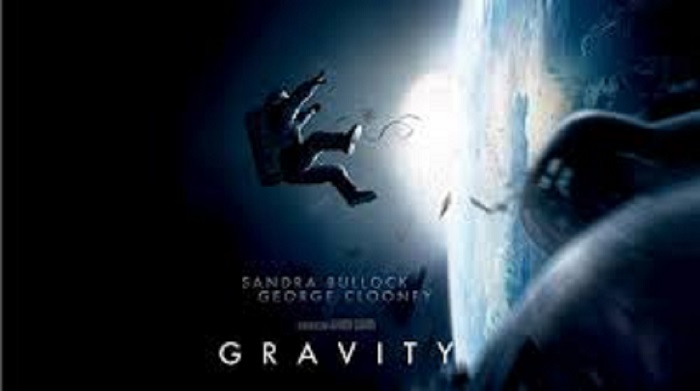The best space film ever done, so far.
Gravity is a traumatic tale of survival that unfolds within space, as envisioned by the director of Children of Men and Harry Potter and the Prisoner of Azkaban, Alfonso Cuarón. Bullock plays Dr. Ryan Stone, a brilliant medical engineer on her first shuttle mission, with veteran astronaut Matt Kowalsky (Clooney) in command of his last flight before retiring. But on a seemingly routine spacewalk, disaster strikes. The shuttle is destroyed, leaving Stone and Kowalsky completely alone, tied to nothing but each other and spiraling out into the blackness.
The 4 year process that Gravity took to come to life involved plenty of typical film-making challenges, but also the process of actually inventing technology to make the movie possible. As the director states, “It’s not a film that could have been made before now.” Initially he thought that it’s a small movie, and with only two characters, they would be done in a year. This wasn’t the case as the mapping out process of the film was being done; it became very apparent that the technology to create it didn’t exist, so they had to invent the technology. This, to them, was a process of discovery as they had no idea of what they were doing.
But how realistic is this movie Gravity, you ask. Well from my research I found out that in this case, the space-shuttle mission is the victim of a phenomenon first explained in a 1978 scientific paper called “Collision Frequency of Artificial Satellites: the Creation of a Debris Belt” by Donald Kessler and Burton Cour-Palais. The researchers explain how debris from a satellite collision can have a cascading, or chain-reaction, effect with other satellites. Unlike shrapnel here on Earth, which travels for a distance before gravity pulls it to the ground, each piece of collision debris in space just keeps moving, circling the planet in its own independent orbit, until it hits something, or eventually burns up in the Earth’s atmosphere. This phenomenon is called the Kessler Syndrome.
Am even lacking in movies to compare this to (maybe In Time), since it’s just so refreshingly new, it’s a rare breed. I would recommend all to see this movie and especially at IMAX 3D. Its a ground breaking, beautiful and technically perfect movie of which am quite sure film schools will be studying in future. 9.1 stars out of 10 because I love a movie with brilliant visual effects and makes you wonder if it really was done in space.





